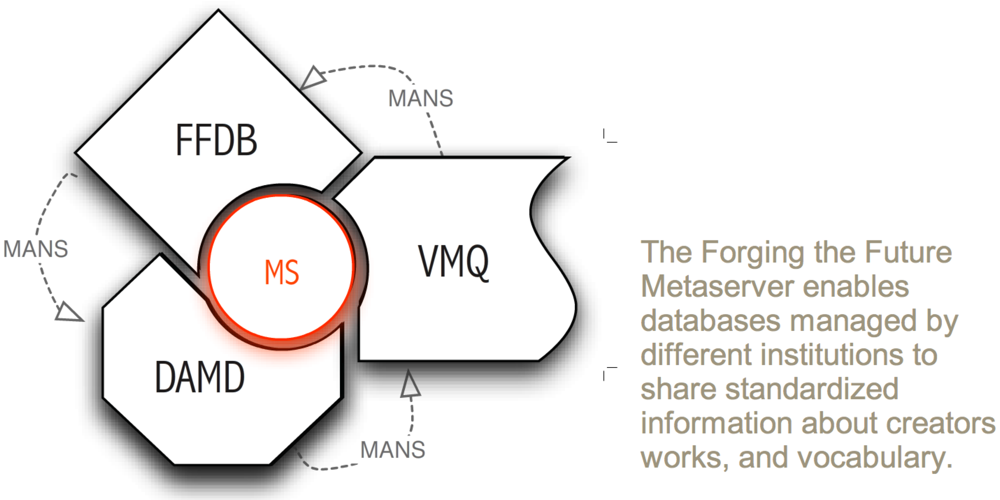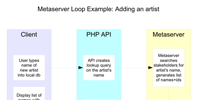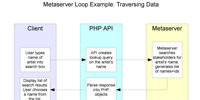with Jon Ippolito and Craig Dietrich
2008

The Metaserver is a type of connective tissue for distributed applications that want to deal with art. It is a database that holds almost no data of its own, only a few basic relationships. What it does store are pointers and links to information stored in other databases. Like a specialized version of early editions of Yahoo!, the Metaserver’s only purpose is to wait for users to tell it where information is stored and generate an index of those locations. Unlike Yahoo!, the Metaserver deals with discrete database records instead of web pages, and makes them available through a public interface that allows automated systems to easily share data with one another.
The Metaserver was designed to be a storehouse for relationships between data and metadata rather than data itself. Like the common ISBN identifier for books, the Metaserver creates a unique identifier for artworks, stakeholders like artists, estates, and cultural institutions, and the vocabulary terms used in critical analysis of art. Though the Metaserver ends up containing an index of the art that it identifies, the data it stores is of little use on its own. A user browsing just the data in the Metaserver will learn little more than which artist created which artwork.
In creating a common, unique identifier, the Metaserver allows other databases to correlate their data across systems. It goes further than just providing an ISBN-like identifier, though; it also allows other databases to store references about each identifier on the Metaserver, essentially turning every system that connects to it into a single giant relational database. If ISBN had a similar structure attached to its identification system a user would be able to find the information stored about a given book at every bookseller, library, or review site that references it.
The Metaserver is currently used by The Pool, The Variable Media Questionnaire, and VocabWiki, three information systems that deal with the creation, preservation, and articulation of art.






